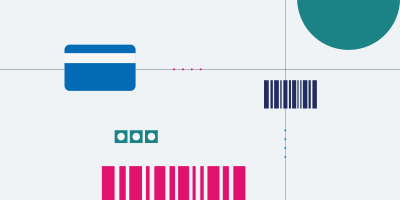Instead of a physical retail shelf full of choices, the digital shelf is made up of every experience buyers have with your product — search results, mobile apps, websites, social media, and more. If you want to win on the digital shelf in digital commerce, you need to stock every channel with high-quality product information.
This change from physical to digital is challenging for some, but it also presents a big opportunity, because you have more control over the appearance of your product and story (e.g., branded videos and 360º photography). To start stocking your digital shelf, identify and prioritize your most important products, clarify price points, invest in search engine optimization (SEO) strategy, and garner as many customer reviews as possible.
Let’s start by defining what the digital shelf is.
What is the digital shelf?
| The digital shelf refers to anywhere customers can view or buy your products online. It’s a combination of search results, ads, product pages, social media accounts, mobile apps, and third-party sites. Basically, the digital shelf is everywhere your product can be found through a screen. |
Think of each digital channel as a store filled with aisles of every kind of product imaginable from every brand in existence. It’s not easy to predict or control how people will move from shelf to shelf in this omnichannel landscape. To avoid getting lost, start by focusing on what you can control: product information and product content.
Product information and product content are the foundation of any digital shelf. To simplify the concept, imagine the digital shelf as the first page of search results from Google. This is where you want your products seen no matter what other channels you use. Most brands tackle this challenge with the use of product information management (PIM).
Components of the digital shelf
The digital shelf is made up of multiple parts. Consider what you would see on a physical store shelf. You have the physical product, packaging, pricing, sales notifications, stock information, aisle number, product categories, and more, all in an effort to make the shopping experience easier.
The same applies to the digital shelf, where you can expect to find:
- Primary and secondary images: These hero images and other imagery help online shoppers visualize the product they’re looking at in a way nothing else can. This content offers different angles and views of a product to replicate what visitors would experience if they were to pick it up and touch it.
- Pricing: An item’s price is incredibly important to in-person and online shoppers, so it needs to be easy to find on the digital shelf. If something is on sale or included in a promotion, that’s helpful to include as well. And it’s even better if you can indicate when the sale or promotion ends in order to avoid customer disappointment if the price is higher the next time they visit the site.
- Product details: What are the item’s dimensions? What color is it? Does it come in multiple sizes? Product details include everything from retailer specifications to keywords, product titles, and descriptions.
- Stock indicators: Nothing promotes a sense of urgency quite like knowing there are only a few items left in stock. Whether you’re looking to inspire a purchase or just provide your customer with helpful information, stock levels are an important part of your digital shelf.
- Ratings and reviews: The opinions of past purchasers matters greatly. And it’s not just about good and bad reviews either. The way a brand responds to reviews is also a consideration in a buyer’s journey.
Why is the digital shelf so important?
Brands spend $350 to $500 per display per store, because they know how much it impacts sales. But that investment is flimsy without backing it with a fully stocked digital shelf. That’s because 80% of shoppers turn to their phone to help them shop while in a store. They look for product content, price comparisons, and customer reviews, which they find on the first page of search results. The first page of search results is your primary digital shelf, whether you have customers in physical stores or not.
The number of pages consumers are willing to scroll through to find a product will vary by industry, from nine pages for energy purchases to 31 pages for groceries and 26 pages for fashion. So, not only is it important to get your product on the digital shelf, you also need to make it desirable at a glance. Otherwise, shoppers will pass it by. To do that, you need a recipe that focuses on your most important products, high-quality product content, SEO strategy, and product reviews.
How to win on the digital shelf
The first step to winning the digital shelf is getting accurate product information in front of customers. You also want to deliver visual content that helps them experience your products IRL. Think videos and 360º spin photography.
Detailed product content is one of the most important decision-making factors in the customer journey. 85% of consumers say that product information and pictures are important to them when browsing the digital shelf. To prioritize content strategy, you have to know your top products and invest resources there.
1. Clarify and prioritize your top products and resources
What is your number one product in online revenue? What are your top five? Which categories do you depend on to grow? Knowing these things is a huge first step to winning the digital shelf. When you know your top products, you can invest resources appropriately.
For example, if your top product isn’t selling as well as it usually does, but its search rank hasn’t changed, it’s likely time to run a new ad campaign or increase spending on existing campaigns. Launching a new product will take extra investment and human resources up front to get it moving and selling. Once you know your priorities, you can focus on getting your product noticed on the digital shelf and keeping it highly visible.
2. Maintain competitive prices at all times
Many consumers are looking for the best value or products that fit their budget. If that aligns with your business strategy and you’re selling the same products as your competitors, then you’ll want to keep your prices competitive or offer a price match option. But if you have similar — yet not the same — products available, providing clear product information and differentiators will be key to winning a sale when your product has a higher price point.
3. Employ a targeted SEO strategy
You’ve got to have the right SEO elements on your product page, but that alone won’t always get you to the first page of Google search results. You’re going to need high-quality images, video, 360º spin photography, and a way to get lots of traffic to your product pages so they stay on top. Knowing all the little tips and tricks to optimize product SEO is crucial.
Working with an SEO agency is another way to create a targeted SEO strategy. An agency can help identify keywords and build a plan to keep your top products on the digital shelf. Posting on your blog and social channels at regular intervals will also enrich your SEO strategy.
And don’t overlook software that may allow you to sidestep agencies and consultants altogether. Conductor, for example, is a comprehensive organic search platform that boosts search engine visibility and organic traffic with powerful tools for keyword research and content optimization. Consider enhancing your martech stack with tools like it.
4. Stay on top of reviews and garner as many as possible
Customer reviews help people make purchase decisions, and they help SEO. Incorporate customer review functionality on your product pages and a strategy for encouraging reviews of your products. Send buyers emails directly after they’ve made a purchase and reminders afterwards. Make sure to include incentives whenever you can, but don’t ever pay for false reviews.
You can invest in events like gift-card giveaways to incentivize people to write reviews for products they’ve purchased. Influencer marketing is another way to think about and get reviews. Having your product on social channels can boost your overall SEO signal for a product, too. Ask bloggers to write about your products and do what you can to get product reviews in as many forms as possible.
5. Learn who your customers are and what they say about your brand
Acquiring reviews offers insights about your audience, but there’s a wealth of data that can help you learn more about them, such as transaction history, channel preference, and pain points. Do they respond to email campaigns that offer coupons? Or do social media posts with discount codes garner greater engagement? What complaints do they regularly lodge with your call center? Answers to such questions lead to more effective marketing — you’d put greater investment in social media campaigns, for example, if sales tended to originate in that channel, while call-center data can tell you how you might improve your products or even what new product lines to develop.
Of course, sifting through the volumes of data that yield such insights is a task unto itself, but there’s software — a customer data platform (CDP), for instance — that can do that work for you. With a CDP (particularly one fueled by machine learning), you have a central hub for all the data that your organization gathers, giving you a complete and unified profile not only of each customer but behavioral patterns of various audience segments. It’s fast becoming a differentiator for leading businesses; find out how a CDP can support yours.
Level up your digital shelf strategy
You can level up your digital shelf strategy by focusing on the right products, maintaining competitive prices, investing in SEO strategy, getting reviews, and learning about your audiences. Remember that your product information has to be accurate if you want customers to trust your products on the shelf. With consistency, hard work, and the right technology, you can win the coveted space that’s front and center on the digital shelf.
Acquia’s combined product information management (PIM) and digital asset management (DAM) solution can help you optimize your digital shelf, as can our CDP. Request, watch, or click through a demo of Acquia DAM (Widen) and Acquia CDP to see what they can do for your digital strategy.



